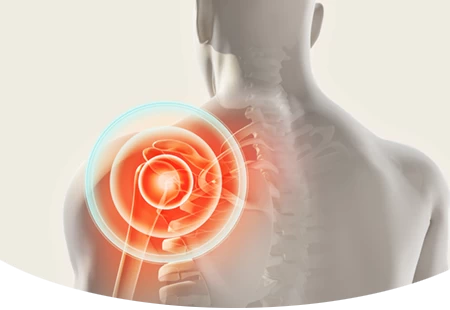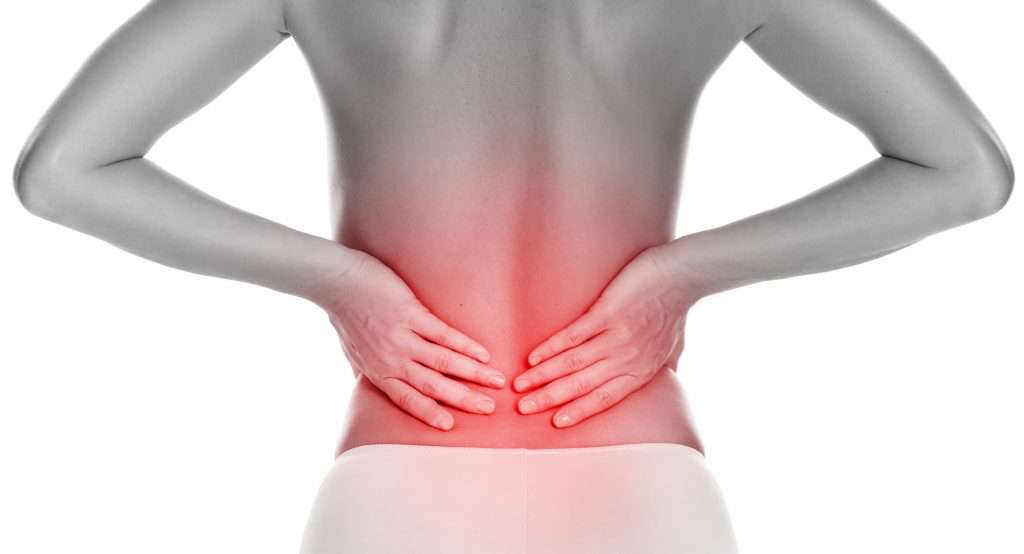The rotator cuff is a key group of muscles and tendons that helps facilitate upper body movement. A damaged rotator cuff can cause considerable pain to a patient and subsequently lower their quality of life. You may not realize how often you use your shoulder in your daily life. The simple acts of putting on clothes or brushing your hair may be impossible if your rotator cuff is damaged.
At least two million people visit their doctor every year with an issue with their rotator cuff. There are likely millions of more people with undiagnosed rotator cuff issues as well. These patients are asymptomatic and are dealing with minor cases The medical community does a relatively good job of treating patients with non-invasive treatment methods, such as physical therapy.
However, there are many patients who have rotator cuff injuries that require surgical intervention. There are over 400,000 surgical repairs of rotator cuffs each year just in the United States. Surgery is expensive, risky, and can knock a patient out of work for multiple weeks. The medical community has not developed comprehensive treatment methods to treat all patients with rotator cuff syndrome.
The prevalence of rotator cuff syndrome will likely only increase in the coming years. The population in the United States is aging, which will lead to more cases of the musculoskeletal condition. The medical community needs more effective treatment options to address current and future needs. Thankfully, stem cell therapy may be a potential treatment option for patients with rotator cuff syndrome.
What Is A Rotator Cuff?
The rotator cuff is a common name for a group of four muscles in the shoulder. These muscles are known as the Supraspinatus, Infraspinatus,Teres minor, and Subscapularis. Rotator cuff muscles are used in a variety of upper body movements, including abduction, external and internal rotation, and flexion. These muscles are needed in almost every type of shoulder movement and also help to stabilize the shoulder. Strength and flexibility in the shoulder are reliant on the rotator cuff muscles.
If this group of muscles become damaged or impaired at all, it can affect the movement of the shoulder. When this occurs the condition is known as rotator cuff syndrome.
What Is Rotator Cuff Syndrome?
Rotator cuff syndrome describes a condition where an injury or degenerative condition affects the performance of the rotator cuff. Damage can occur gradually over time or all at once. Anyone over the age of 50 generally will have some level of wear and tear in their rotator cuffs.
There are a variety of conditions that can cause rotator cuff syndrome. Here are some of the most common causes:
Rotator Cuff Tendonitis
Rotator cuff tendonitis is the most common cause of shoulder pain. The tendons of the rotator cuff are inflamed or irritated, which causes pain. Generally, this condition develops over time when a patient performs a repeating motion over a long period of time. For example, baseball pitchers can develop this condition from repeatedly throwing a baseball.
Rotator Cuff Tear
In this type of rotator cuff syndrome, the tendon becomes partially or completely torn off of the bone. This could be the result of a sudden injury or a gradual tear over time. This can be the most serious type of rotator cuff syndrome. Patients who experience this condition may have to undergo surgery.
Shoulder Bursitis
In the shoulder there are tiny fluid-filled sacs that are known as bursa. These sacs are sandwiched in between the bones in your shoulder to prevent friction. When the sacs become inflamed or irritated, the condition is known as shoulder bursitis. Patients will experience pain when attempting to perform various movements.
Calcific Tendonitis
This type of condition occurs when a buildup of calcium deposits occurs on the rotator cuff. The calcium deposits can cause pressure on the tendon, as well as chemical irritation. Calcium deposits will feel like toothpaste in the shoulder.
Shoulder Impingement
This type of rotator cuff syndrome occurs when a tendon rubs on the shoulder blade. When you raise your arm, the space between the acromion and rotator cuff narrows. The acromion can rub against the tendon and the bursa. This rubbing can cause inflammation and additional damage to the rotator cuff. Continual motion and movement can lead to additional inflammation.
Researchers have noticed that when a patient tears their rotator cuff that fat deposits will develop instead of the repaired muscle. A relatively new study showed that stem cells in the shoulder were more likely to develop into fat cells rather than muscle cells. Researchers believe that there is a 23% decrease in the amount of muscle tissue developed and an 87% of increase in the amount of fat cells developed.
Current Treatment Methods
The medical community has developed a variety of treatments that are applicable to several types of rotator cuff syndrome.
Physical Therapy
One of the most common treatment methods that physicians recommend is physical therapy. Stretching and other effective exercises can help relieve the level of pain that a patient is feeling. This works by strengthening the muscles around the rotator cuff. When the other shoulder muscles and surrounding arms muscles are strengthened, the rotator cuff muscles will not have to work as well.
Generally, physical therapy can help a patient manage the symptoms of rotator cuff syndrome. Some rotator cuffs can repair themselves along with the help of physical therapy. Physical therapy often will not be able to solve the underlying condition that is causing rotator cuff syndrome.
Rest
Taking time off of normal activities is all that some patients need to recover. This rest will give your body the time it needs to properly repair the wear and tear done on the rotator cuff. Your body can rebuild and repair the damaged tissue in the rotator cuff.
Steroid Injection
If physical therapy does not work, a physician may prescribe steroid injections. No, this type of steroid injections are not aimed at improving strength, but decreasing the level of pain a patient feels. Steroid injections can limit the amount of inflammation that is present at the site of injection.
Steroid injections are relatively effective at reducing patient symptoms in the short term. There are some potential negative side effects of this treatment, however. There is a chance that the steroid injections will weaken the rotator cuff over the long term. This could increase the pain level and make other treatment methods less effective.
Surgery
When physical therapy or other treatments are not effective in repairing the damaged rotator cuff, patients may have to undergo surgery. There are a few surgeries that can be performed depending on the type of rotator cuff syndrome that the patient is experiencing. Some of the types of surgery that are performed are arthroscopic tendon repair, shoulder replacement, tendon transfer, and more.
Since rotator cuff syndrome is such a large group of conditions, the success rates of surgery vary significantly. Some studies have listed the surgical success rate anywhere between 35% all the way up to 90%. Surgery can also lead to additional complications and the recovery time for these types of surgeries can be months.
None of these treatment methods fully address the needs of the entire population of patients with rotator cuff syndrome. Researchers have been looking at alternative therapies in order to treat this condition. Stem cells may be the answer that researchers have been looking for.
Stem Cell Therapy For Rotator Cuff Syndrome
Researchers have been looking at stem cell therapy for a number of conditions. Stem cells have incredible properties that can help patients with rotator cuff syndrome. This type of therapy may be able to improve patient symptoms and increase their quality of life.
Stem cells have anti-inflammatory properties. Inflammation could be preventing the body from repairing the damage done in the rotator cuff muscles. When a part of the body is experiencing inflammation the body has less healing factors and less oxygen present. This would prevent the body from properly healing.
One study says that stem cells are the guardians of inflammation. Stem cells may have the ability to properly communicate with the immune system. If stem cells can reduce the immune system’s response, then the body may have a chance to heal itself. Patients may be able to utilize stem cell injections to reduce the level of inflammation in the shoulder.
Not only do stem cells reduce inflammation, but they can also differentiate into almost any type of cell in the body. Stem cells may be able to grow into rotator cuff tissue to replace dead or damaged rotator cuff muscle tissue. Additionally, stem cells have the ability to create new blood vessels. This could help the shoulder receive more oxygen, growth factors, and nutrients via the new blood vessels. Stem cells also release regenerative growth factors in the area that they are injected into. These growth factors can encourage the body to repair the damage done in the rotator cuff.
There has been some research into how stem cells are able to help patients with rotator cuff syndrome.
Promising Research
Stem cell therapy and surgery can be complementary treatment methods. Some studies have shown that patients who received stem cells after undergoing surgery have recovered more quickly than patients who did not receive the treatment. Stem cells can help the body ensure that the surgery is a success.
One study looked at 90 patients who underwent rotator cuff repair surgery. After they received their surgery, one group of patients received stem cell injections into the repaired area, while the other group did not. The results of the study showed a stark difference just six months after they received the surgery and injection. 100% of the patients that received stem cell injections had completely healed rotator cuffs, while just 67% of patients who did not receive the stem cell injections had completely healed rotator cuffs.
The results continued to hold in the long term as well. 87% of patients who received stem cell injections had fully healed rotator cuffs even 10 years after they received the surgery and injection. Only 44% of patients who did not receive stem cell injections had fully healed rotator cuffs after 10 years. This small study showcases the abilities of stem cells to improve patient outcomes with rotator cuff syndrome.
There are a number of other animal and human studies that are continuing to evaluate the effectiveness of stem cell therapy for patients with rotator cuff syndrome. There are even a few studies that patients with rotator cuff syndrome can enroll in today.
The BioXcellerator team is dedicated to improving the condition of patients with rotator cuff syndrome. One of the ways that we are reducing rotator cuff syndrome symptoms is through the use of an innovative stem cell treatment called Golden Cells.
Golden Cells
The quality of stem cell treatments has come into question in recent years. Some stem cells clinics have been caught using subpar stem cells in their therapies. The BioXcellerator team has developed a comprehensive process to ensure that our patients receive the highest quality stem cells available. We use a screening process that disqualifies stem cell candidates based on a certain set of criteria.
This criteria was developed by looking at the strictest quality standards based on various regulations. We took the best criteria from the regulations and made them even more strict. Additionally, we screen stem cells for any abnormalities or diseases. The end result we like to call ‘golden cells.’ These stem cells should have higher regenerative and anti-inflammatory abilities. Golden cells should be a more effective stem cell treatment as compared to conventional stem cell treatments.
Reach out to your healthcare professional today to learn more about potential treatment options for your rotator cuff syndrome. Stem cell therapy may have the potential to improve your symptoms and help you get back to your normal activities. The future of stem cells is incredibly promising in not just treating rotator cuff syndrome, but many other musculoskeletal conditions as well.


